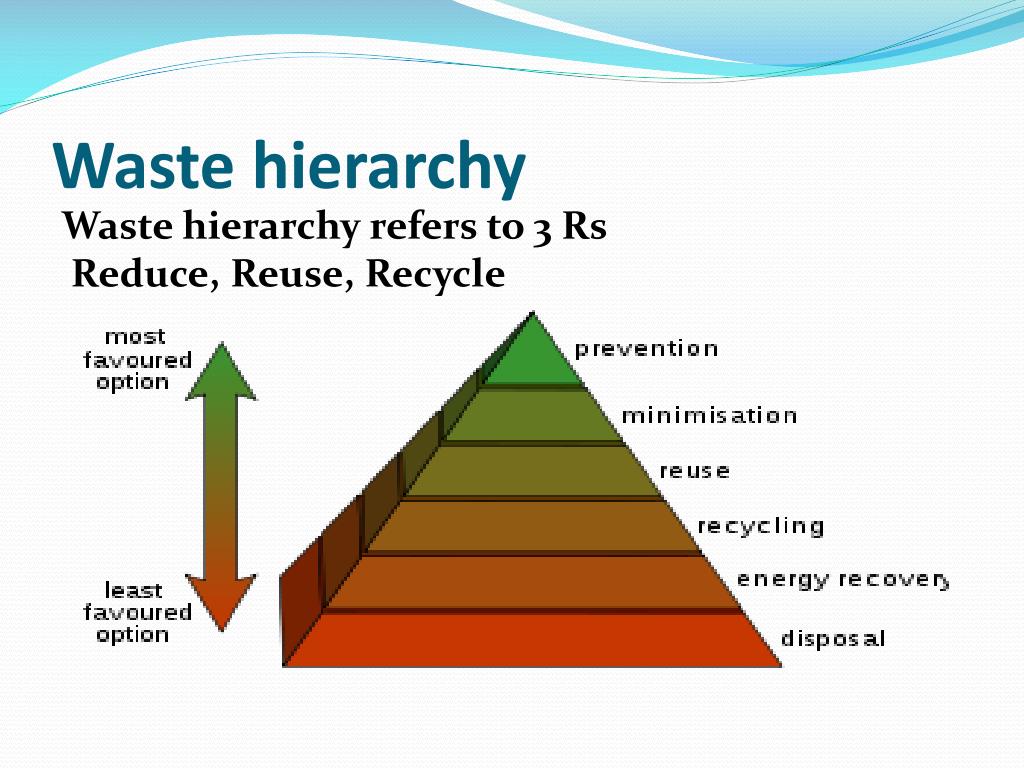The waste hierarchy or 3 r s are in order of importance reduce reuse and recycle

The Waste Hierarchy: Reduce, Reuse, and Recycle

In today’s world, where the focus is increasingly on sustainable living and eco-friendly practices, understanding and implementing the waste hierarchy is of utmost importance. The waste hierarchy, also known as the 3 R’s (reduce, reuse, and recycle), provides a structured approach to managing waste in an efficient and environmentally friendly manner.
Reduce

The first and most important step in the waste hierarchy is to reduce waste generation. This involves minimizing the amount of waste we produce in the first place. By being mindful of our consumption patterns and making conscious choices, we can significantly reduce the overall waste generated. This can be done by opting for reusable items over disposable ones, avoiding excessive packaging, and making informed purchasing decisions.
Reducing waste not only conserves valuable resources but also helps in reducing pollution and the energy required for waste management. It is a crucial step towards achieving sustainability and mitigating the environmental impact of waste disposal.
Reuse
The next step in the waste hierarchy is to prioritize the reuse of items whenever possible. Reusing items means extending their lifespan by using them again in their original form or repurposing them for a different use. This helps in reducing the demand for new products and conserves resources.
There are numerous ways to incorporate reusable practices in our daily lives. For example, instead of buying single-use plastic water bottles, we can invest in a reusable water bottle. Similarly, donating clothes, books, and household items we no longer need to charitable organizations ensures that these items get a new lease of life rather than ending up in landfill sites.
By promoting a culture of reuse, we can significantly decrease the amount of waste sent for disposal and contribute to a more sustainable future.
Recycle
Recycling is the last step in the waste hierarchy and involves the conversion of waste materials into new products. It is a process where materials like paper, glass, plastic, and metal are collected, sorted, and processed to manufacture new products instead of being discarded as trash.
Recycling plays a crucial role in conserving resources, reducing pollution, and saving energy. By recycling materials, we can reduce the need for raw material extraction, lower greenhouse gas emissions, and minimize the impact on the environment.
To support recycling efforts, it is essential to separate recyclable materials from general waste and ensure they are properly recycled. Many communities have established recycling programs, and it is important that we make use of these initiatives to create a circular economy and reduce our ecological footprint.
In conclusion, the waste hierarchy or 3 R’s - reduce, reuse, and recycle - provides a framework for managing waste effectively. By prioritizing these steps in order, we can reduce waste generation, conserve resources, and minimize environmental impact. Implementing the waste hierarchy in our daily lives is not only beneficial for the planet but also helps create a sustainable and greener future.
Sources:
Tags
Share
Related Posts
Quick Links
Legal Stuff

